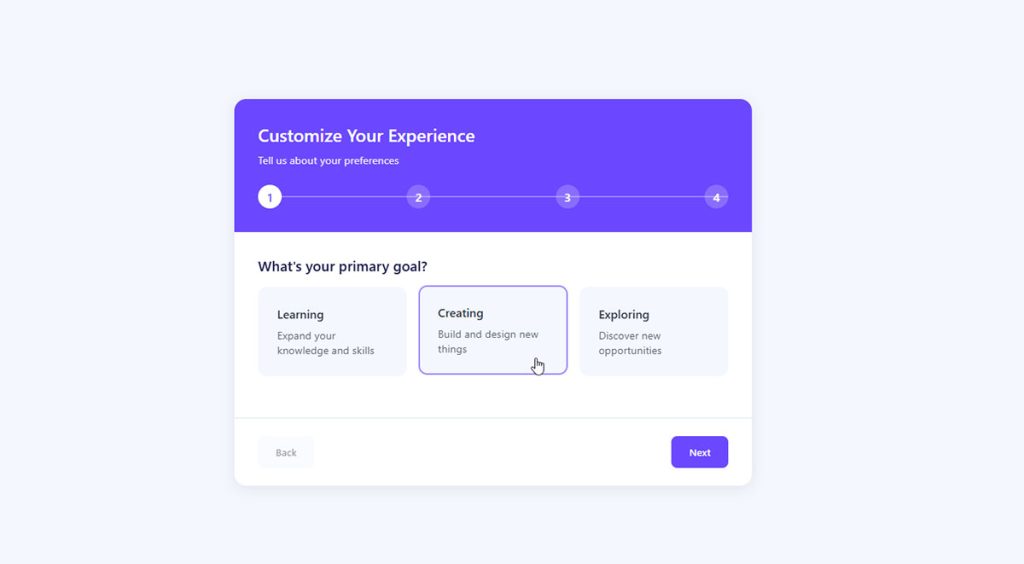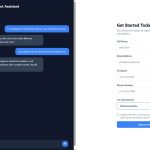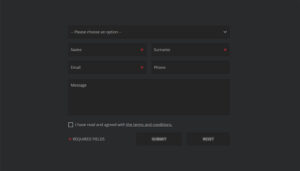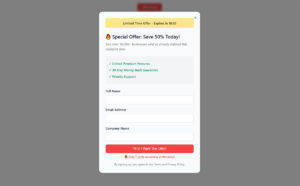Your website visitors want to reach you. Without a form, they can’t. Understanding what WordPress forms are and why they matter changes how you approach visitor communication, lead capture, and…
Table of Contents
Your forms ask the same questions to everyone, even when half of them don’t apply. That’s where conditional logic changes everything.
Conditional logic is the decision-making mechanism that shows or hides form fields based on user responses, creating personalized experiences that adapt in real-time. Instead of forcing everyone through identical questions, your forms get smarter.
This guide covers how conditional logic works in programming and web forms, the syntax across different languages, practical applications in marketing automation, and best practices for implementation. You’ll learn to build dynamic forms that only ask relevant questions.
What is Conditional Logic?
Conditional logic is a programming concept that allows systems to make decisions based on whether specific conditions are true or false, controlling which actions execute based on boolean evaluation.
The basic structure follows an if-then pattern where the program checks a condition and responds accordingly.
This decision-making process appears everywhere from simple scripts to complex applications, determining what users see and what actions the system performs.
How Conditional Logic Works
See the Pen
Modern Conditional Form with Pastel Theme by Bogdan Sandu (@bogdansandu)
on CodePen.
At its core, conditional logic evaluates boolean expressions that return either true or false.
When a condition evaluates to true, the associated code block executes. When false, the program either skips that block or moves to an alternative action defined in an else clause.
The evaluation happens at runtime, meaning the program makes decisions dynamically based on current data, user input, or system state.
Think of it as a series of yes/no questions that direct the flow of program execution. Each question (condition) leads down a different path.
The system checks conditions in order, executing the first block where the condition proves true, then typically moves past the remaining alternatives.
Types of Conditional Logic
Simple Conditionals
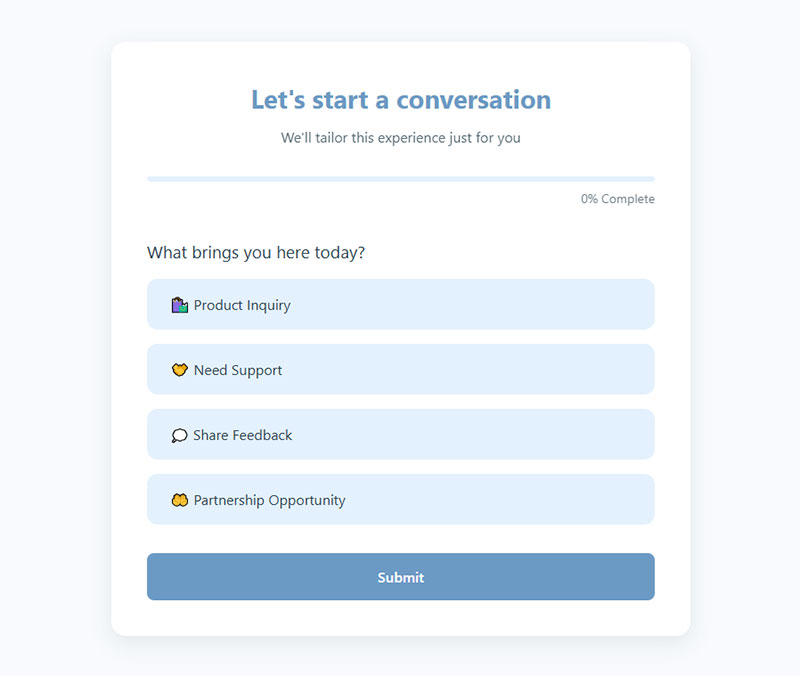
A single if statement checks one condition and executes code only when that condition is true.
The most straightforward form of decision-making in code, perfect for basic yes/no scenarios.
Nested Conditionals
Place conditional statements inside other conditional statements to handle complex decision trees.
Useful when you need to check multiple related conditions in sequence, where each answer determines the next question.
Compound Conditionals
Combine multiple conditions using logical operators like AND (&&) or OR (||) to evaluate several criteria at once.
Lets you check if a user is both logged in AND has admin privileges, or if payment is by credit card OR PayPal.
Switch Statements
Alternative to long if-else chains when checking a single variable against multiple possible values.
Cleaner syntax for scenarios like checking which day of the week it is or what status code an API returned.
Conditional Logic in Programming Languages
JavaScript Conditional Syntax
if (userAge >= 18) {
showContent();
} else {
redirectToParentPage();
}
JavaScript also supports ternary operators for compact conditionals: status = isActive ? 'online' : 'offline';
Python Conditional Syntax
if temperature > 30:
print("It's hot")
elif temperature > 20:
print("It's warm")
else:
print("It's cold")
Python uses indentation instead of brackets, making the control flow visually clear.
PHP Conditional Syntax
if ($userRole === 'admin') {
displayAdminPanel();
} elseif ($userRole === 'editor') {
displayEditorPanel();
} else {
displayViewerPanel();
}
PHP follows a C-style syntax similar to JavaScript but requires the dollar sign for variables.
Conditional Logic in Web Forms
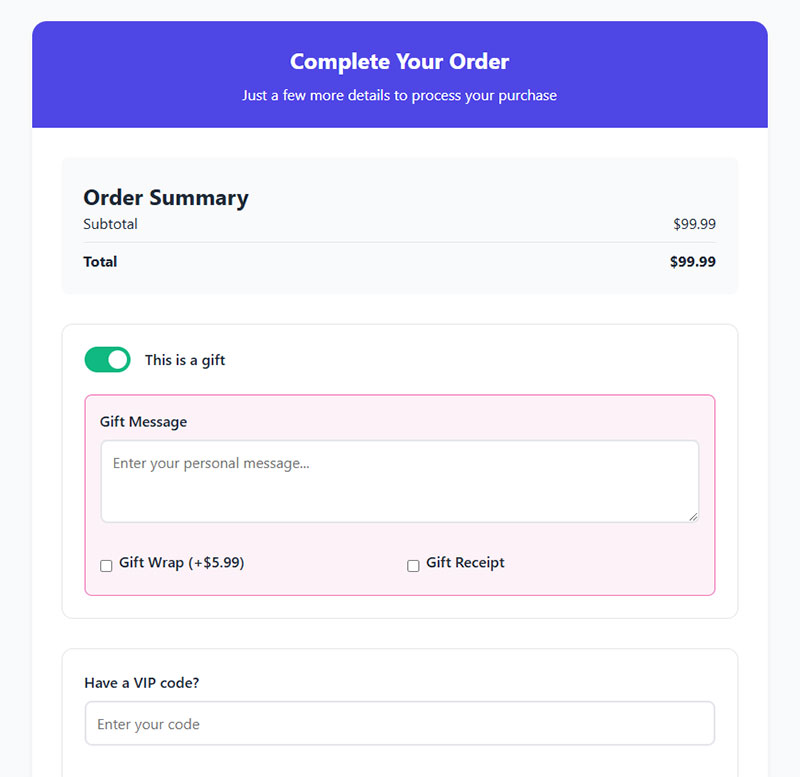
Web forms use conditional logic to create dynamic, personalized experiences that adapt to user responses.
Show or hide form fields based on previous answers. If someone selects “Business” as their account type, additional company-related fields appear.
Required field logic changes based on context. Email becomes required only if the user chooses “email updates.”
Multi-step forms often skip entire sections when they’re not relevant to the user’s situation, reducing friction and improving completion rates.
This creates smarter forms that feel conversational rather than interrogative. Users only see what matters to them.
A form builder with conditional logic makes implementing these rules straightforward without touching code.
Conditional Logic in Marketing Automation
Marketing platforms use conditional logic to personalize customer journeys based on behavior, demographics, and engagement.
Email sequences branch based on whether recipients open, click, or ignore previous messages. Opens trigger one path, silence triggers another.
Customer segmentation happens automatically when users meet specific criteria like purchase history over $500 or browsing specific product categories three times.
Lead generation strategies rely heavily on conditional triggers to nurture prospects at the right time with the right message.
Abandoned cart emails send only if someone added items but didn’t complete checkout within 24 hours.
Common Conditional Logic Operators
Equality operators check if values match exactly:
==or===tests if two values are equal!=or!==tests if two values are different
Comparison operators evaluate relationships between values:
>greater than<less than>=greater than or equal to<=less than or equal to
Logical operators combine multiple conditions:
&&(AND) requires all conditions to be true||(OR) requires at least one condition to be true!(NOT) inverts a boolean value
Ternary operators provide shorthand for simple if-else statements: condition ? valueIfTrue : valueIfFalse
Conditional Logic Best Practices
Keep Conditions Simple
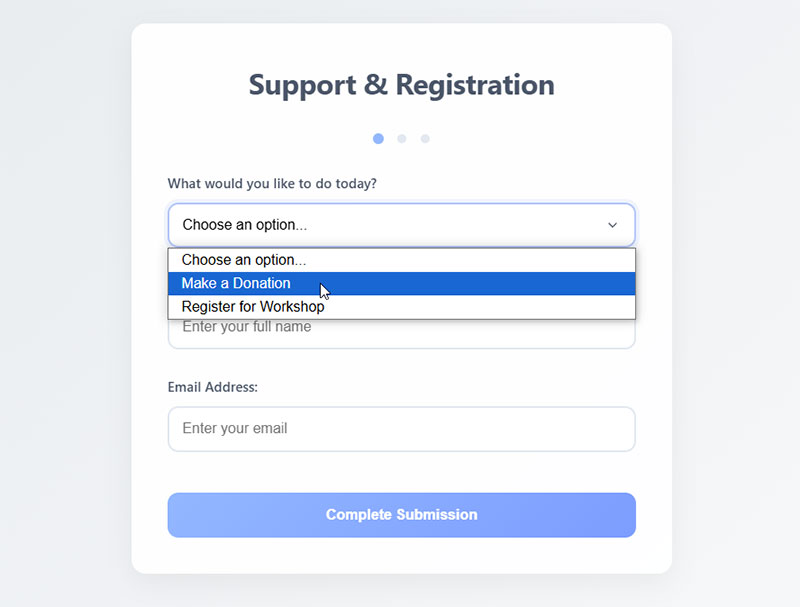
Each conditional statement should evaluate one clear concept. Complex nested logic becomes hard to debug and maintain.
Break complicated conditions into separate, well-named variables that explain what you’re checking.
Avoid Deep Nesting
More than three levels of nested conditionals signals a need to refactor. Extract logic into separate functions or use switch statements.
Deep nesting creates code that’s difficult to follow and error-prone.
Use Clear Variable Names
isUserActive beats flag1. hasAdminPrivileges beats x.
Descriptive names make conditions self-documenting, showing intent without comments.
Test Edge Cases
Check boundary conditions like zero, negative numbers, empty strings, and null values. These often expose bugs.
Test both the happy path and failure scenarios to confirm your conditional logic handles all possibilities.
Conditional Logic Mistakes to Avoid
Using assignment (=) instead of comparison (== or ===) in conditions causes bugs that silently break logic.
Forgetting to handle the else case when one is needed leads to undefined behavior.
Comparing different data types without conversion creates unexpected results. The string “10” doesn’t equal the number 10 without type coercion.
Overly complex boolean expressions with mixed AND/OR operators confuse precedence. Use parentheses to make intent clear.
Testing floating-point numbers for exact equality fails due to precision issues. Check if values are within an acceptable range instead.
Putting the most common condition last in a long if-else chain wastes processing time. Most frequent cases should be checked first.
Failing to consider what happens when multiple conditions are true simultaneously creates logic errors in compound conditionals.
Not accounting for truthy/falsy values in JavaScript means 0, empty strings, and null all evaluate as false when you might not expect them to.
How Conditional Logic Improves User Experience
Form validation uses conditional logic to check inputs in real-time, showing form error messages only when rules are broken.
Dynamic content adapts to user preferences and behavior without requiring page refreshes. Show relevant products, hide irrelevant options.
Mobile forms use device detection to adjust layouts and input types, displaying number keyboards for phone fields on smartphones.
Progressive disclosure reveals complexity gradually. Advanced options stay hidden until users toggle them on, keeping interfaces clean.
Accessibility features activate conditionally based on user needs or system settings, ensuring everyone can interact with your content.
Smart defaults fill in likely values based on context, reducing the work users need to do while still allowing changes.
Conditional Logic in Different Industries
Financial applications use complex conditional rules for loan approvals, fraud detection, and investment recommendations based on risk profiles.
Healthcare systems route patients to appropriate care levels, flag potential drug interactions, and trigger alerts when vitals fall outside safe ranges.
E-commerce platforms show product recommendations, apply discounts to qualifying orders, and adjust shipping options based on location and cart value.
Lead generation for SaaS companies uses conditional logic to score and route leads based on company size, industry, and feature interest.
Educational platforms adapt learning paths based on quiz performance, showing remedial content or advancing students who demonstrate mastery.
Lead generation for real estate applies conditional logic to match buyers with properties meeting their specific criteria and budget.
Building Conditional Logic Without Code
Modern WordPress forms include visual conditional logic builders that let non-developers create sophisticated rules through point-and-click interfaces.
Drag-and-drop rule builders show conditions and actions visually. If this field equals that value, then show these fields or skip to this page.
WordPress contact form plugins often include conditional logic as a core feature, making dynamic forms accessible to everyone.
Marketing automation platforms provide similar visual editors for building email sequences and customer journeys without writing code.
The logic works the same under the hood, but the interface removes technical barriers. Anyone can create conditional workflows that respond to user behavior.
Lead capture forms benefit significantly from conditional logic, showing qualification questions only to prospects who meet initial criteria.
Advanced Conditional Logic Techniques
Chain multiple conditions in sequence to create decision trees that narrow down options progressively.
Use calculated fields that update dynamically based on other field values, applying formulas conditionally.
Implement time-based conditions that trigger actions at specific dates, times, or intervals.
Combine user input with external data through API calls, making decisions based on information pulled from other systems.
Create feedback loops where the outcome of one conditional affects the evaluation of subsequent conditions.
Conversational forms use advanced conditional logic to create natural, chat-like experiences that feel more like conversations than traditional forms.
Conditional Logic Performance Considerations
Order conditions by likelihood, checking the most common cases first to minimize unnecessary evaluations.
Avoid redundant checks by structuring your if-else chains so each condition only evaluates when previous ones have failed.
Cache the results of expensive operations rather than recalculating them in every conditional check.
Use switch statements instead of long if-else chains when checking a single variable against many values. Compilers optimize switches better.
Short-circuit evaluation stops checking conditions once the outcome is determined. Put the cheapest checks first in AND operations.
Lazy loading conditional code that only executes under specific circumstances keeps initial page loads fast.
Testing Conditional Logic
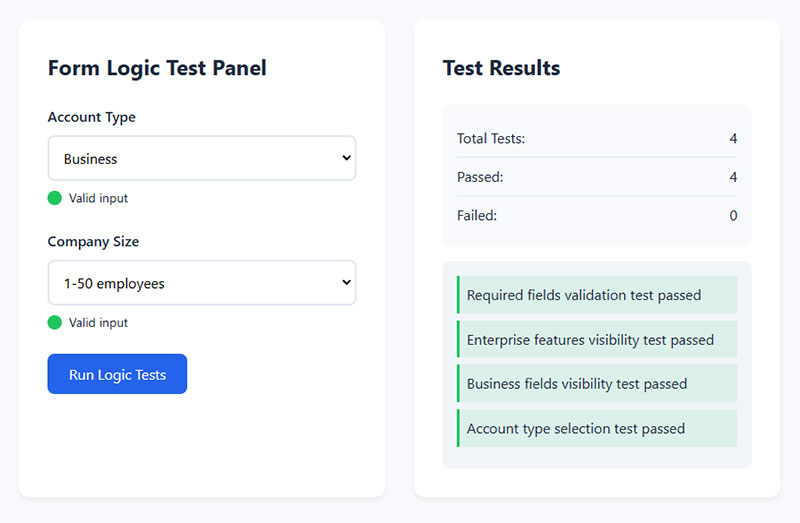
Write test cases for each possible path through your conditional statements. Every branch needs verification.
Use boundary value analysis to test conditions right at their limits: if the condition checks age >= 18, test with 17, 18, and 19.
Create truth tables for complex boolean expressions to ensure all combinations of inputs produce expected outputs.
Automated testing tools can run through all conditional paths systematically, catching edge cases manual testing might miss.
Mock different user types, device types, and data states to confirm conditionals respond correctly across scenarios.
Form accessibility testing should include checking that conditional logic works with screen readers and keyboard navigation.
Documenting Conditional Logic
Comment complex conditionals with explanations of business rules they implement. Future developers (including yourself) need context.
Use descriptive function names that explain what conditions they check rather than how they check it.
Maintain decision tables that map inputs to outputs for complicated nested logic.
Keep a changelog of rule modifications, noting when and why conditional logic changed.
Flow diagrams visualize branching paths more clearly than code alone, helping stakeholders understand business logic.
Form design documentation should explain which conditions trigger which fields, making it easier to troubleshoot issues.
FAQ on Conditional Logic
What is conditional logic in simple terms?
Conditional logic is a decision-making process where actions execute based on whether specific conditions are true or false. It follows if-then patterns to control program flow, showing users relevant content while hiding irrelevant options based on their responses or data.
How does conditional logic work in forms?
Forms with conditional logic show or hide fields based on previous answers. When users select specific options, related questions appear while irrelevant ones stay hidden. This creates personalized experiences that adapt to each respondent’s situation, reducing form length and improving completion rates.
What programming languages use conditional logic?
All modern programming languages include conditional logic. JavaScript, Python, PHP, Java, C++, and Ruby implement if-else statements with similar logic but different syntax. The core concept of boolean evaluation remains consistent across languages, making conditional logic a universal programming fundamental.
What are the main types of conditional statements?
The primary types include simple if statements, if-else chains, nested conditionals, compound conditions using AND/OR operators, and switch statements. Each serves different scenarios, from basic yes/no decisions to complex decision trees that evaluate multiple related conditions in sequence.
Can you use conditional logic without coding?
Yes. Modern form builders and marketing automation platforms provide visual editors for creating conditional workflows without code. Drag-and-drop interfaces let you set rules through point-and-click actions, making sophisticated logic accessible to non-developers while maintaining the same functionality as coded solutions.
What is the difference between AND and OR operators?
AND (&&) requires all conditions to be true before executing. OR (||) requires only one condition to be true. AND creates stricter requirements (user must be logged in AND have admin privileges), while OR provides flexibility (payment by credit card OR PayPal).
When should I use nested conditional logic?
Use nested conditionals when subsequent decisions depend on previous answers. If someone selects “Business Account,” you might ask about company size, then employee count based on that size. Avoid nesting deeper than three levels, as it becomes difficult to maintain and debug.
What are common conditional logic mistakes?
Using assignment instead of comparison operators, forgetting else cases, comparing different data types without conversion, and creating overly complex boolean expressions with unclear precedence. Testing edge cases like null values and zero prevents these errors from reaching production code.
How does conditional logic improve user experience?
It reduces cognitive load by showing only relevant questions, shortens forms dynamically, provides real-time form validation, and creates personalized interactions. Users complete forms faster when they’re not wading through inapplicable fields, directly improving conversion rates and reducing abandonment.
What is a ternary operator in conditional logic?
A ternary operator provides shorthand syntax for simple if-else statements: condition ? valueIfTrue : valueIfFalse. It evaluates a boolean condition and returns one of two values in a single line. Common in JavaScript and other languages for assigning values based on conditions compactly.
Conclusion
Understanding what conditional logic is gives you control over how your forms, websites, and applications respond to users. It’s the difference between static, one-size-fits-all experiences and dynamic interactions that adapt in real-time.
Whether you’re writing if-else statements in JavaScript or using visual rule builders in form plugins, the core concept remains the same. Check conditions, make decisions, execute actions.
Start small with simple conditionals in your web forms to hide irrelevant fields. The immediate impact on completion rates will convince you.
Then expand to more sophisticated applications like marketing automation workflows and progressive disclosure patterns. Your users won’t notice the boolean logic running behind the scenes, but they’ll appreciate interfaces that respect their time and show only what matters.


